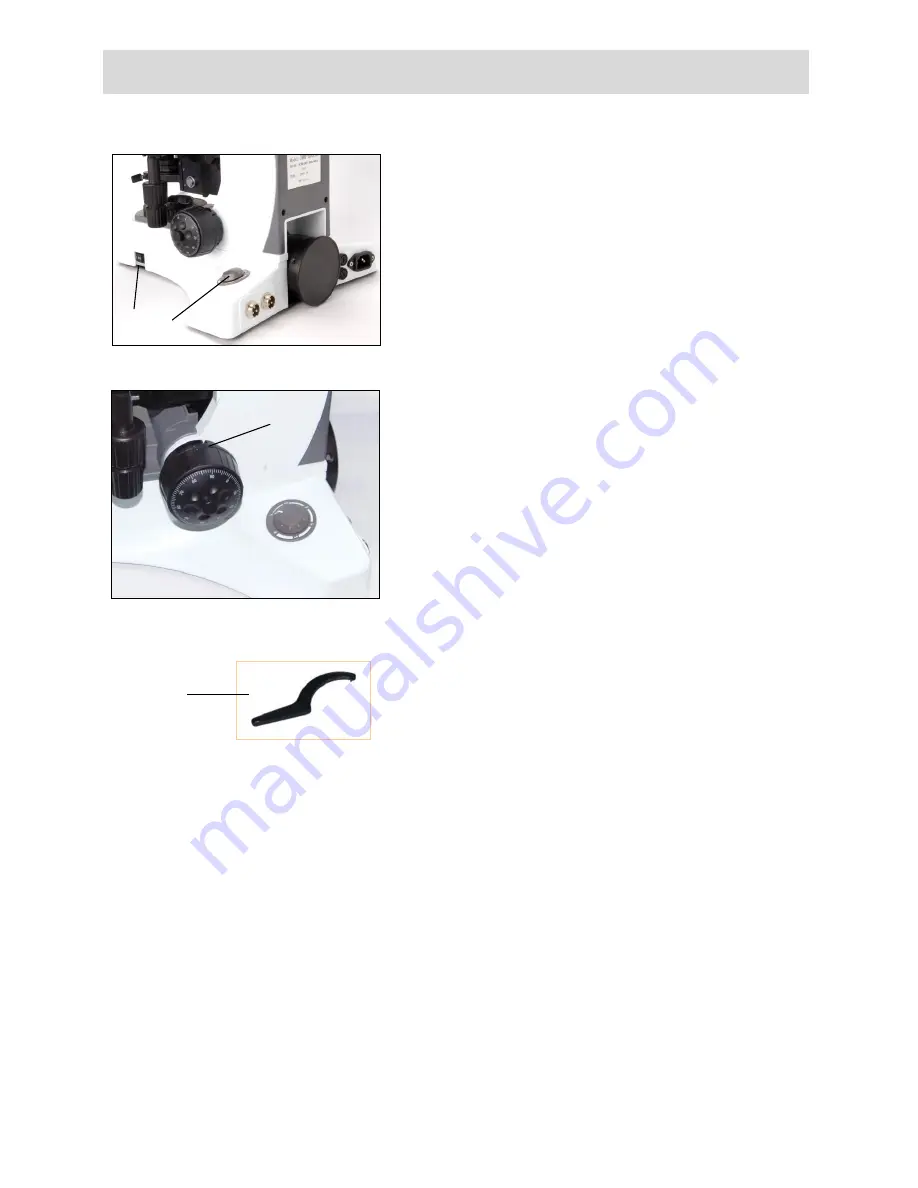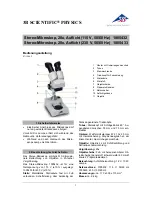
9
3. Operation
3-1
Turning on the Lamp
Connect the power cable and turn the main switch
①
to the “I”
(on) position.
When using transmitted light illumination, fix the
lamp holder into the jack on the back of the
microscope (Fig.11), and insert the power plug into
the power jack of the microscope (
③
in Fig.11). Then
turn the main switch
①
to the “
‖
” (on) position.
3-2
Adjust Brightness
To adjust the brightness, turn knob
②
clockwise to increase the
voltage therefore increasing the illumination; and turn
anti-clockwise to turn down the voltage and dim the light.
Using the lamp at low voltage, will prolong the life
of the halogen bulb.
3-3
Adjusting the Tension Adjustment Collar
The tension adjustment collar was adjusted before
leaving the factory, if you find it loose or if the
mechanical stage drops by itself because of weight,
please use the tensioning adjustment tool and adjust
the collar
③
until the tightness is corrected.
Fig.16
①
②
Tensioning
adjustment tool
③
Fig.17







































